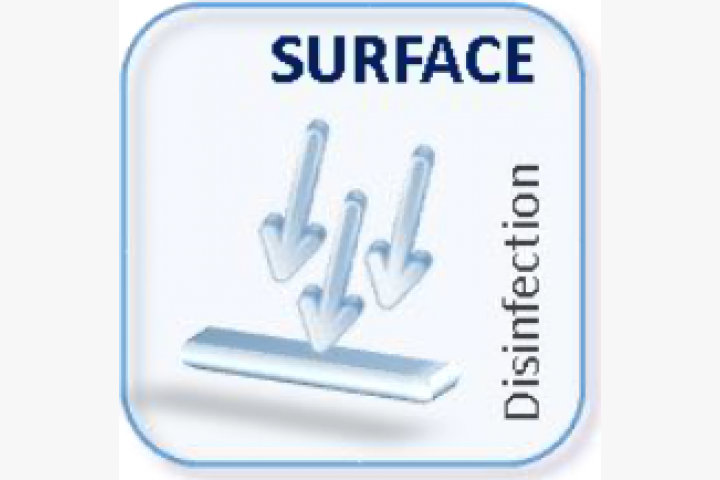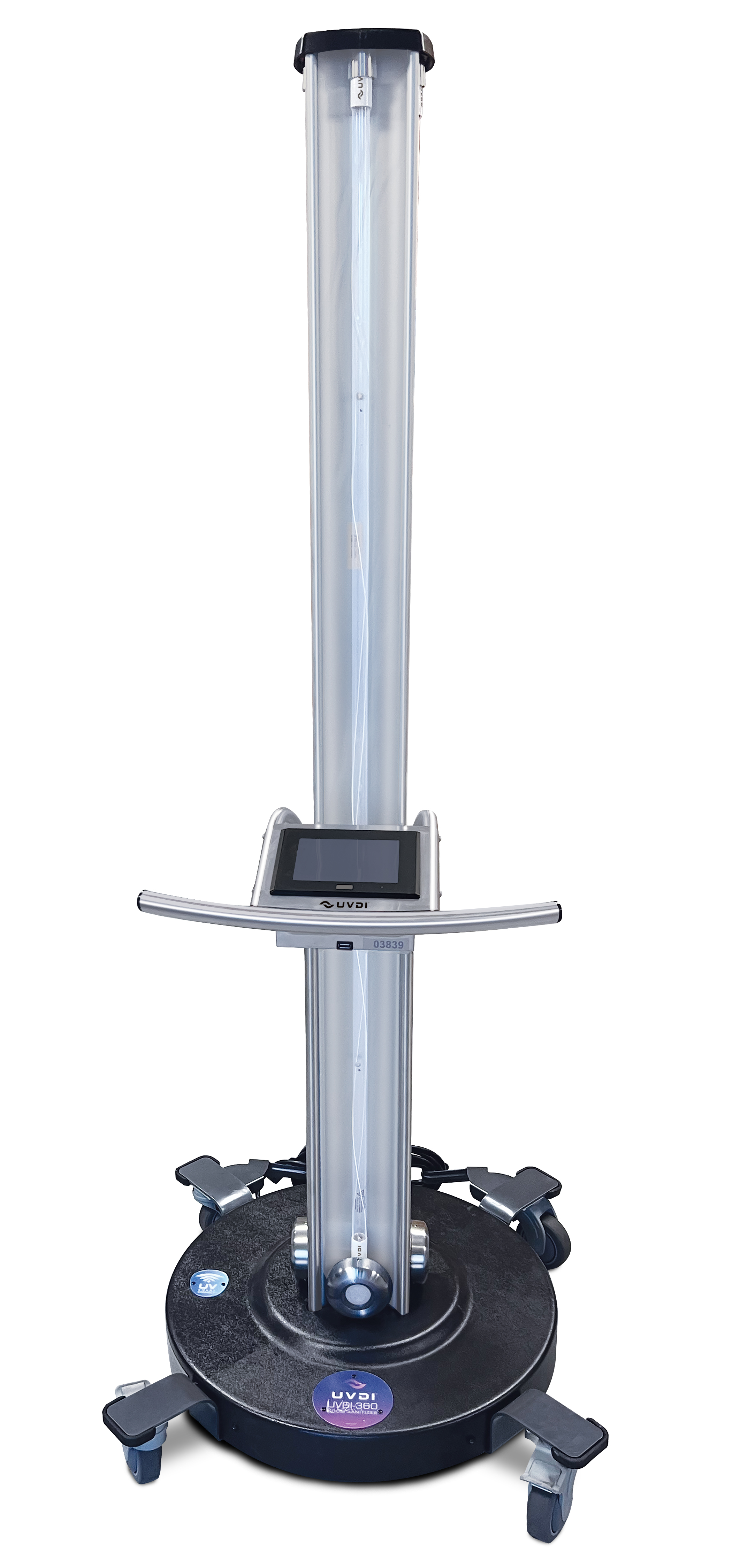Dive Much Deeper into Far-UVC UV Sanitizers: Recognizing Their Function in Pathogen Control
Dive Much Deeper into Far-UVC UV Sanitizers: Recognizing Their Function in Pathogen Control
Blog Article
Exploring the Benefits of Far UVC Light: Revolutionizing Indoor Air Quality
Indoor air top quality has actually always been a problem, however the current international health dilemma has brought it right into sharper emphasis. As we navigate the obstacles of a post-pandemic world, finding ingenious solutions to boost air quality has actually become paramount. One such remedy that has obtained attention is Much UVC light. This innovative technology has the prospective to revolutionize interior air quality by properly neutralizing air-borne virus without posing damage to human beings. But just how specifically does Far UVC easy work? What are its health and wellness advantages? And how can it add to decreasing irritants in our living areas? In this discussion, we will certainly explore the interesting globe of Much UVC light and discover its possibility in changing the means we safeguard our indoor atmospheres.
Just How Much UVC Light Works
Far UVC light functions by giving off short-wavelength ultraviolet light that has the capability to permeate and inactivate microorganisms. Unlike standard UV light, which can be dangerous to human skin and eyes, much UVC light has a shorter wavelength that is absorbed by the outer layers of human skin, avoiding it from reaching the underlying living cells. This makes it a reliable and risk-free option for continuous sanitation in busy areas.
When far UVC light is discharged, it connects with the DNA and RNA of bacteria, consisting of viruses and germs, disrupting their capacity to reproduce and creating them to end up being non-active. The high power of the short-wavelength light problems the molecular framework of the hereditary material, stopping the microbes from spreading out and recreating.

Moreover, far UVC light can be conveniently integrated right into existing illumination components, making it a cost-efficient service for a wide variety of applications, including medical care facilities, institutions, workplaces, and public transport. Its capability to continuously decontaminate occupied areas without posing a danger to human wellness makes much UVC light an appealing technology in the field of indoor air high quality monitoring.
Far UVC Light's Effect on Airborne Pathogens
The impact of far UVC light on airborne virus is substantial in decreasing the transmission of contagious conditions and enhancing interior air top quality. Far UVC light refers to a details range of ultraviolet light that has a wavelength between 207 and 222 nanometers. Unlike standard UVC light, which is unsafe to human skin and eyes, much UVC light has actually been located to be risk-free for humans while still working versus pathogens.
Research studies have actually revealed that much UVC light has the capacity to suspend a variety of air-borne infections, consisting of the flu infection and the coronavirus (far-uvc). These virus are sent via breathing droplets, and by utilizing far UVC light, it is possible to decrease their feasibility and prevent their spread
One of the key advantages of making use of far UVC light is its capability to get to all areas of a space. Unlike other sanitation techniques that might have limited reach, much UVC light can be set up in overhead illumination fixtures, making certain that the entire room is dealt with. This makes it especially reliable in congested areas such as medical facilities, colleges, and public transport.
Additionally, much UVC light can be utilized continually without positioning a threat to human health and wellness. It can be implemented as component of a thorough approach to enhance interior air high quality by reducing the focus of airborne pathogens. By integrating far UVC light right into existing ventilation systems, it is feasible to develop safer and healthier indoor atmospheres.
Health Advantages of Far UVC Light
Using much UVC light provides numerous health benefits, making it a beneficial tool in advertising public health and safety. Much UVC light has been discovered to successfully kill air-borne microorganisms, such as infections and microorganisms, without hurting human skin or eyes. This makes it an excellent service for decontaminating interior atmospheres and decreasing the threat of infections.
One of the crucial wellness advantages of far UVC light is its capability to combat the spread of airborne diseases. Research studies have actually revealed that much UVC light can effectively inactivate infections like flu and consumption. By installing far UVC lights in public areas, such as offices, healthcare facilities, and schools, the transmission my link of these diseases can be substantially reduced.
Moreover, much UVC light has actually been located to be secure for continual direct exposure, as it does not cause skin damage or enhance the danger of skin cancer cells. This is because of the truth that much UVC light has a minimal range of infiltration in human skin, preventing any type of damage to deeper layers.
Along with its straight effect on air-borne microorganisms, far UVC light can additionally have indirect wellness advantages. By decreasing the existence of unsafe microorganisms in the air, it can enhance indoor air high quality, bring about a decrease in breathing signs and symptoms and allergic reactions.
Much UVC Light's Role in Reducing Allergens

Far UVC light, with its wavelength in the range of 207 to 222 nanometers, has been confirmed to be effective in inactivating fungi, germs, and viruses. Recent research studies have also revealed that it can effectively reduce the visibility of irritants in indoor spaces. When much UVC light is given off, it communicates with the DNA and RNA of microorganisms, damaging their hereditary product and avoiding their replication.
Much UVC Light's Possible in Public Spaces
With its tested effectiveness in lowering irritants and inactivating microbes, much UVC light holds terrific potential for application in public areas. Public spaces, such as health centers, airports, offices, and colleges, are commonly crowded and vulnerable to the spread of airborne illness. Incorporating far UVC light innovation in these locations can significantly improve interior air top quality and reduce the transmission of damaging microorganisms.
One encouraging application of far UVC light in public areas is in ventilation systems - far-uvc. By setting up much UVC lamps in cooling and heating systems, click site the innovation can sanitize the air as it flows, effectively decreasing the concentration of airborne viruses and microorganisms. This strategy can help stop the spread of conditions such as influenza, covid-19, and tuberculosis, advertising a much healthier and more secure setting for passengers
Additionally, much UVC light can be used in the disinfection of regularly touched surface areas. High-touch areas in public spaces, such as doorknobs, hand rails, and elevator buttons, can nurture a wide variety of microorganisms. By tactically putting much UVC light resources in these locations, the innovation can continually decontaminate surfaces, reducing the threat of contamination and transmission.
Additionally, making use of much UVC light in public areas is safe for human exposure. Unlike standard UVC light, which can be dangerous to human skin and eyes, far UVC light has actually been verified to be non-toxic and risk-free for constant operation in busy spaces. This makes it a perfect solution for improving interior air high quality without posing any type of health dangers to individuals.
Final Thought

Much UVC light functions by producing short-wavelength ultraviolet light that has the capability to permeate and inactivate bacteria. Unlike standard UV light, which can be unsafe to human skin and eyes, far UVC light has a shorter wavelength that is taken in by the external layers of human skin, avoiding it from reaching the underlying living cells. Far UVC light refers to a particular variety of ultraviolet light that has a wavelength between 207 and 222 nanometers. Unlike conventional UVC light, which is damaging to human skin and eyes, far UVC light has been found to be safe for humans while still being effective versus microorganisms.
Unlike traditional UVC light, which can be damaging to human skin and eyes, far UVC light has been proven to be non-toxic and safe for continual operation in occupied rooms.
Report this page